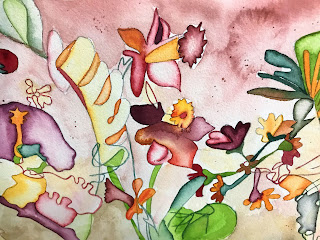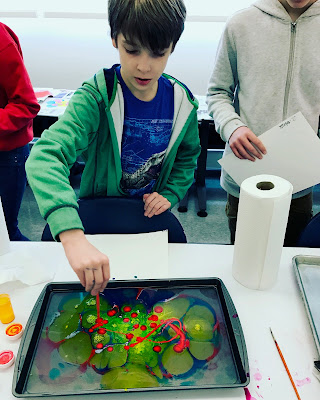This last weekend I taught a workshop for middle schoolers on sketchbooks: the keeping of, the making of, and what to include in. We also talked about creativity and the ways artists practice creativity.
We talked about reasons artists keep sketchbooks and they came up with a pretty good list. (Don't want to be bored anywhere, practice makes perfect, experimentation, list of ideas, note taking, safe place to express feelings, keeping our eyes open and being present, having a record of progress, inspiration...and I'm sure you can think of many more.)
Then we practiced some drawing exercises for the purpose of encouraging idea generation and flexible thinking, including tea blot drawing, exquisite corpse, finish the line, and a non-dominant hand self-portrait. This was a little nerve wracking for this age group--no one wanted to look like a "bad" artist, but they participated admirably and we got some really cool drawings.



Next we started the process of making our own sketchbooks. The students made ten signatures of four pages and used coptic stitch to bind them. We didn't get our books all the way done. The process was complex and new and also time consuming (due to some supply issues), but everyone got to the point, I think, that they could finish their book at home.
(Sketchbook I made for the demo)
So we moved on to paper marbling. Here the kids got really into it. It was great to see them experiment with how the paint spread and formed. They got some awesome pieces for including in their sketchbook later and had so much fun doing this part of the workshop.





























































